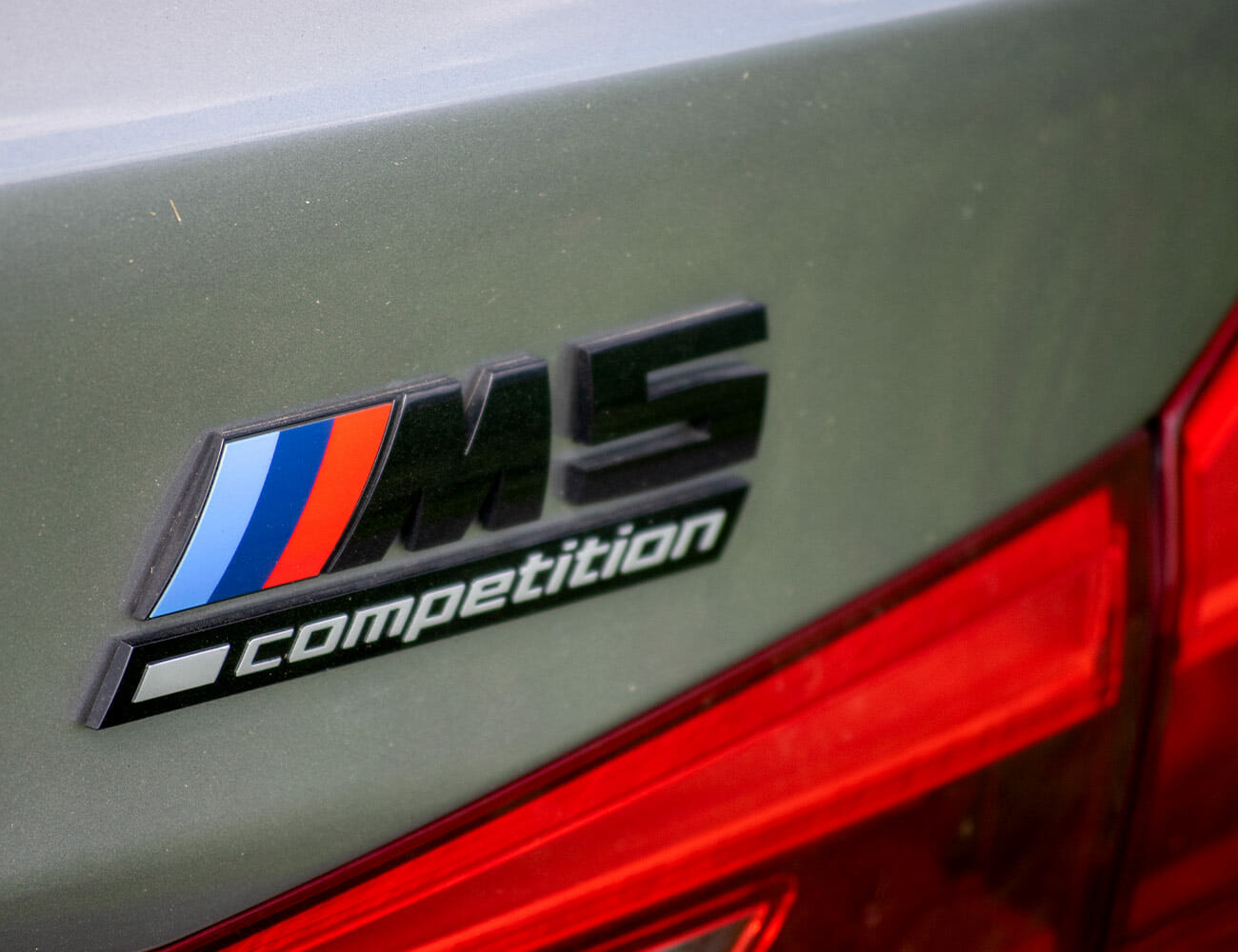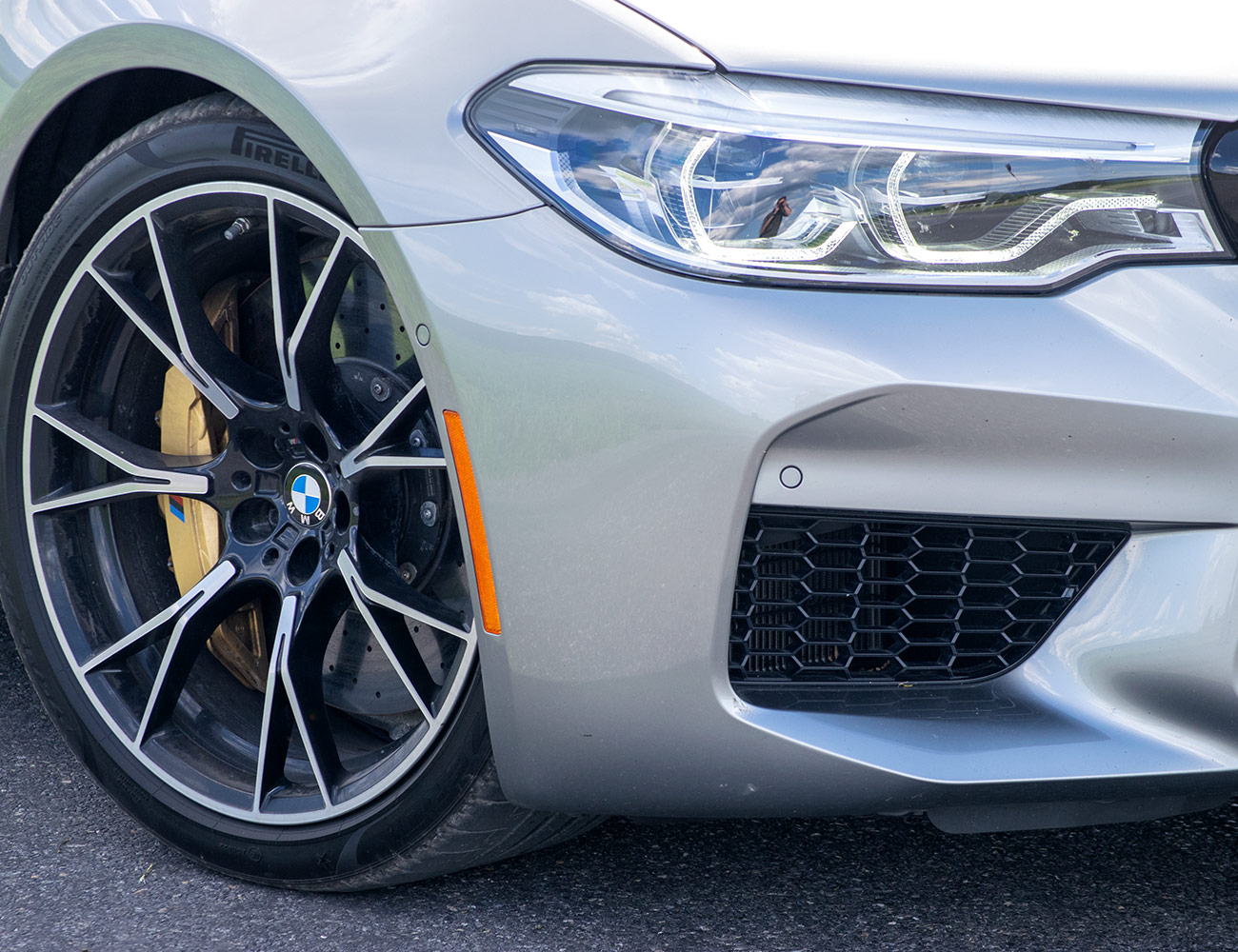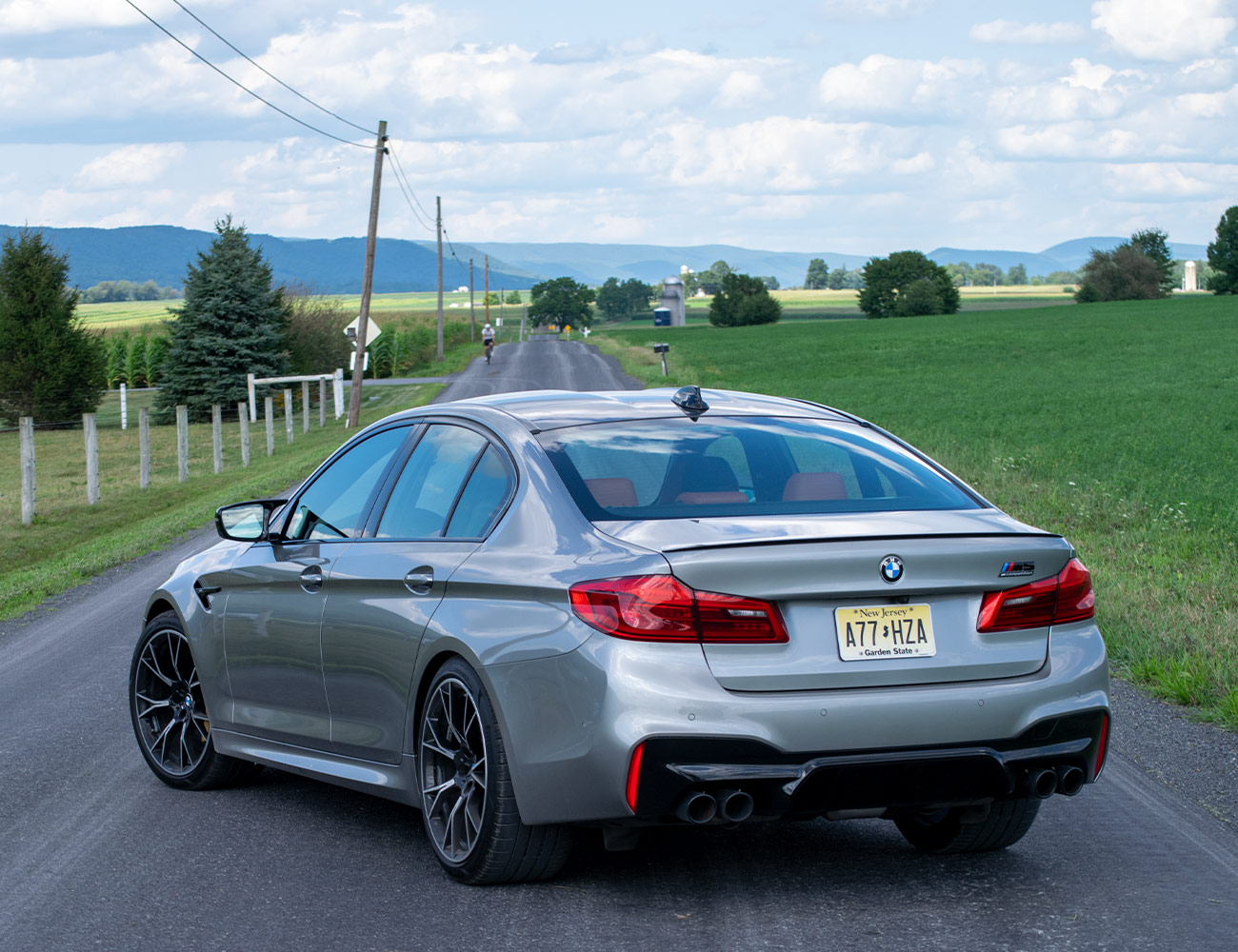Once upon a time, the list of sport sedans began and ended with one car: the BMW M5.
Sure, there were other fast four-doors; those dated back to the days of Duesenberg and Dillinger. But back in 1984, apart from a handful of limited-run special editions rarer than hen’s teeth, the M5 was the only car that delivered true all-around sports car performance — not just straight-line speed, but powerful brakes and nimble, delightful handling — in a family car package.
Things done changed, as they say. These days, the ranks of true sport sedans number so large, you’d need to borrow fingers and toes from a friend or two to count them all. They range from as small as the Honda Civic Si to as large as the Mercedes-AMG S65, some packing engines that crank out more firepower than many supercars. And that’s not even counting the high-performance crossovers that have picked up the fast family car torch and taken it in increasingly physics-defying directions.
In the midst of all this chaos and competition, some might say the M5 lost some of its edge in recent years. With the E39 generation version practically canonized in enthusiasts’ eyes, any successor was liable to be looked upon skeptically, but the E60 M5 made things worse with its clunky single-clutch automated manual gearbox and awkward Chris Bangle design. But it least it was unique — a beast unlike any other on sale, thanks to the F1-inspired screamer of a V10 engine. Its F10 successor, in contrast, seemed all too ordinary by comparison; with a twin-turbo V8 in its engine bay and inoffensive corporate styling, it seemed more like a tuned-up regular 5 Series than the true bearer of the iconic badge.
When the sixth-gen version arrived in 2017, it seemed, well, somewhat same-same, an 11/10ths version of its immediate predecessor. It was a bit larger than its already-large forebear, and it still packed a twin-turbo V8; even worse, now it was connected to the same sort of ZF-sourced torque converter automatic found in almost every other Bimmer, and sent power to all four wheels. One glance at the car at the Gamescom video game convention (it was starring in a new version of Need For Speed), and it wasn’t hard to see this being the M5’s death knell.
But something delightful happened: It turned out it didn’t suck.
Early driving impressions were unexpectedly positive. Instrumented testing revealed it was quicker and more powerful than BMW said — quicker off the line than sports cars that cost two, three, four times as much. It started winning over cynics just as easily as it won comparisons against its key foes.
Then, as if that weren’t enough, BMW made the new M5 even better with the M5 Competition.
The Good: If the idea of “One Car to Do It All” holds any appeal to you, you’ll likely find everything about the M5 Competition good. It’s 95% as fast as a Porsche 911 Turbo and 95% as comfortable as a 7 Series, at a lower price than either of them. All-wheel-drive means it’s two pairs of winter tires away from being a four-season car anywhere short of the Arctic Circle. There’s room for four adults to sit comfortably inside, with a trunk big enough to hold their carry-on luggage and a checked bag or two. The tech features and Bowers & Wilkins stereo could make our Tech desk jealous.
And on top of all that, it’s actually a blast to drive.
Who It’s For: Drivers who crave a three-car garage but only have space in their life for one ride; BMW loyalists who need their faith in the brand restored, have children between the ages of 10 and 20, or both; really, anyone who can handle a lease payment of $1,449 per month.

Watch Out For: The M5 does admittedly take a little warming up to, especially if you’re getting to know it in the city. With its myriad drive mode adjustments tuned to their most conservative settings, it’s almost too lethargic for dealing with aggressive traffic. And like many super sports cars wielding similar amounts of power (and similar electronic reins to make that power usable), you need plenty of open road to make the most of it. Don’t be surprised to find yourself accidentally cracking past double the speed limit from time to time.
Alternatives: Mercedes-AMG E63 S ($106,350+); Cadillac CTS-V ($86,995+); Porsche Panamera Turbo ($153,000+)
Review: In all honesty, the differences between the M5 and M5 Competition are fairly minimal. Power rises by a mere 17 horses — a rise of 2.8 percent, if you’re keeping track — and torque stays the same. The suspension has been subtly yet substantively stiffened, with everything from the engine mounts to the springs to the anti-roll bars beefed up a touch. Unless you wheeled the Competition and the base model along the same section of road back-to-back in immediate succession, odds are good you’d never know what you were missing.

Then again, the delta in price between the “cheap” M5 and its Competition-badged big brother is slim enough to be barely worth mentioning: a mere $7,300, less than the optional carbon ceramic brakes available on either car. (Unless you’re planning on hot-lapping your M car on the track, you’re better off saving that money, anyway.) Considering both variants of the sedan start above $100,000 and can easily climb past $130,000, the difference between them means there’s little reason not to go for the better, faster Competition.
Either way, though, you’re in for a treat. Especially considering how enjoyable the M5 is once it’s out on the open road. The Bimmer plays the part of gran turismo better than most cars, crushing long highway slogs the way frat brothers do cases of Natty Ice after finals. The seats are comfortable enough to fall asleep in, especially once you crank up the massage function that, unlike most cars, doesn’t time out after a few minutes. Active lane-keeping and cruise control systems enable the car to practically drive itself — at least, for 30-60 seconds, until the system starts yelling at you to grab the steering wheel. Left in a relaxed state like this, the M5 feels every bit as luxurious as a 7 Series, so long as you’re occupying the front seats instead of the back.
Still, it may not be as big as the biggest Bimmers, but this 5er ain’t no E39. The car’s dimensions mean it can feel a bit large-and-in-charge, compared with the nimble, lithe rides the M division became known for. That’s easier to swallow, however, once you experience the supercar-level acceleration. Independent tests have shown the newest M5 can reliably crack off a 0-60 mph run in three seconds or less, then zip through the quarter-mile in 11 seconds or so at a trap speed of 130 miles per hour — just a skosh behind the absurd Lamborghini Aventador SVJ.
In the real world, that sort of underhood force translates to the ability to shrink straightaways and pass slower-moving traffic under circumstances that would seem foolhardy in other sedans. When told to be sporty and left to its own devices and, the eight-speed automatic snaps to the right gear with every nudge of the throttle, pushing the engine deep into the sweet, seemingly-bottomless well of turbocharged power and slinging you forward like a catapult. Should that ever grow wearisome — not sure if it could — you can always slide the shifter into manual mode and use the metal paddles to hold gears as desired. Eight speeds is one too many to personally shift through every time you take your car for a spin, but opting for your choice of cog is delightful for exploring and exploiting the nuances of the engine.
It’s not just good on the straights, though. Find a stretch of winding road, and it’ll claw through every turn with grip and speed that defies logic; the mass may still be there, but it feels like the Bavarians have found some way to neutralize it, as though they worked out how to make the sort of inertial dampening system that kept Captain Picard and Co. from being turned into jelly every time the Enterprise-D went to warp. The steering is a return to form for the company, especially after sampling the likes of the M850i; it feels confident, accurate and immediate, imparting the sensation of connecting road to driver that Bimmers have largely lacked in recent years. It is, indeed, fun.

The M-tuned all-wheel-drive system offers a three-way choice when it comes to delivering power: the standard layout, which splits power fairly evenly between the two axles; 4WD Sport, which biases the power towards the rear wheels; and full-blown hooligan mode, which sends every kilowatt of power to the back axle and only works with all the electronic safety nets disengaged. That one’s best left for doing donuts and burnouts in the nearest parking lot; for everything else, the Sport setting is the ideal balance, delivering rear-biased power delivery along with the four-wheel drip needed to make the most of that herd of thundering Teutonic thoroughbreds.
Of course, that’s only one of the many, many driving mode options to play around with. The gearbox offers six different shift speeds (three for automatic mode, three for manual shifting); the suspension, steering, and throttle pedal all offer their own choices, as do the exhaust and traction/stability control systems. Luckily, once you finally dial the systems in the way you’d like, you can save them via steering wheel-mounted bookmark buttons; even more luckily, you can actually save two separate settings using the two different buttons, in case you prefer to optimize the car in different ways for, say, commuting and back-road carving. Unfortunately, no matter how you program them, the car’s systems will always default to their tame settings when you start it up, so you’d best grow used to thumbing one of those buttons as the first thing you do after starting the 4.4-liter V8.
Still, that’s a minor tradeoff given the car’s breadth of capabilities. The M5 has always managed to master both sports-car speed and sedan space, but many times, those capabilities haven’t been baked together into a harmonious package as entertaining as it should have been. The latest version manages to be fast, fancy and fun, all at once.
Verdict: With the M5 Competition, BMW has finally reclaimed its post at the top of the sport sedan heap. At least, until the next round of contenders comes along.
2019 BMW M5 Competition: Key Specs
Powertrain: 4.4-liter twin-turbocharged V8; eight-speed automatic; all-wheel-drive
Horsepower: 617
Torque: 553 lb-ft
Top Speed: 190 mph
EPA Fuel Economy: 15 mpg city, 19 mpg highway
BMW provided this product for review.

Hot takes and in-depth reviews on noteworthy, relevant and interesting products. Read the Story

